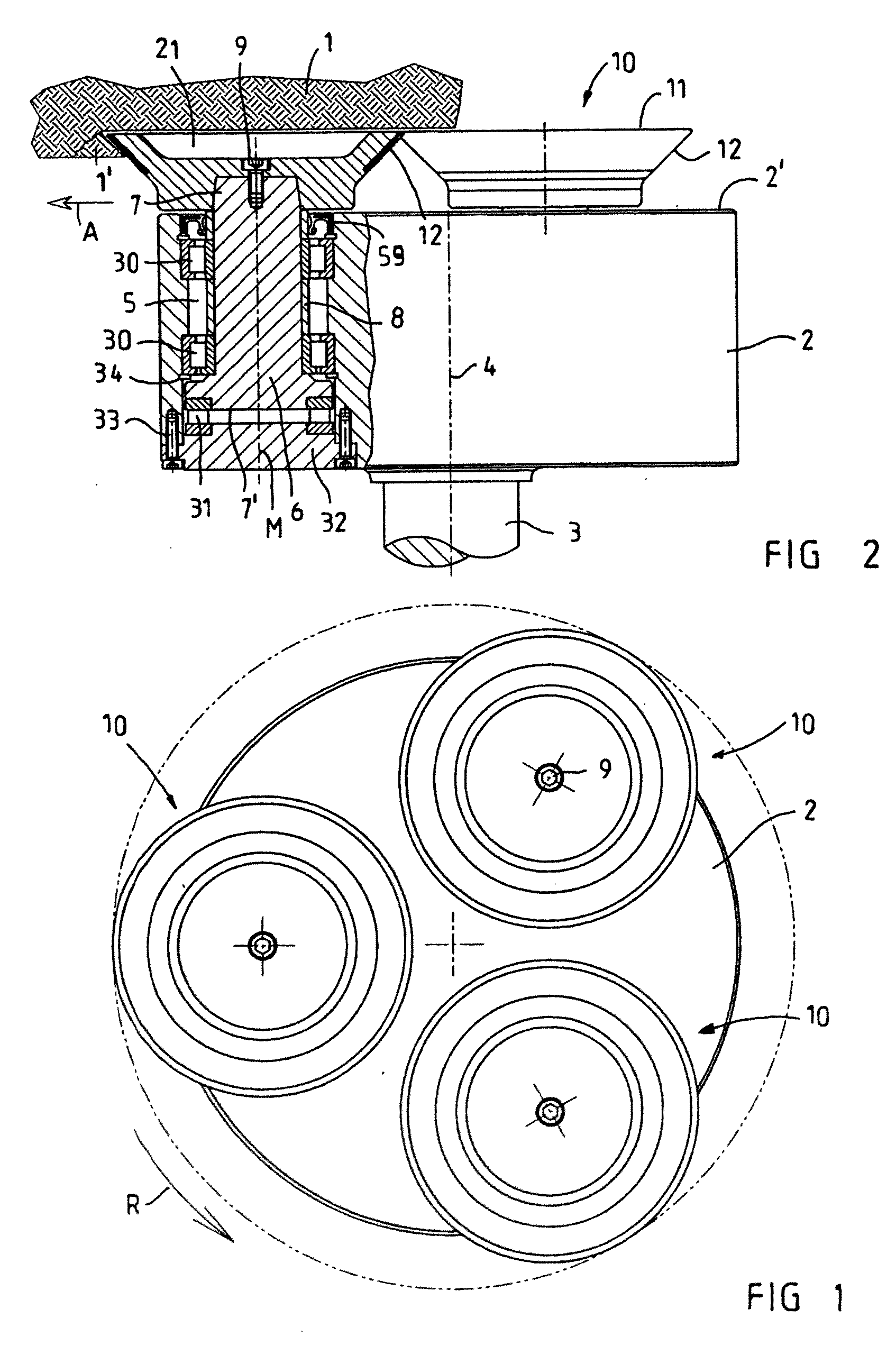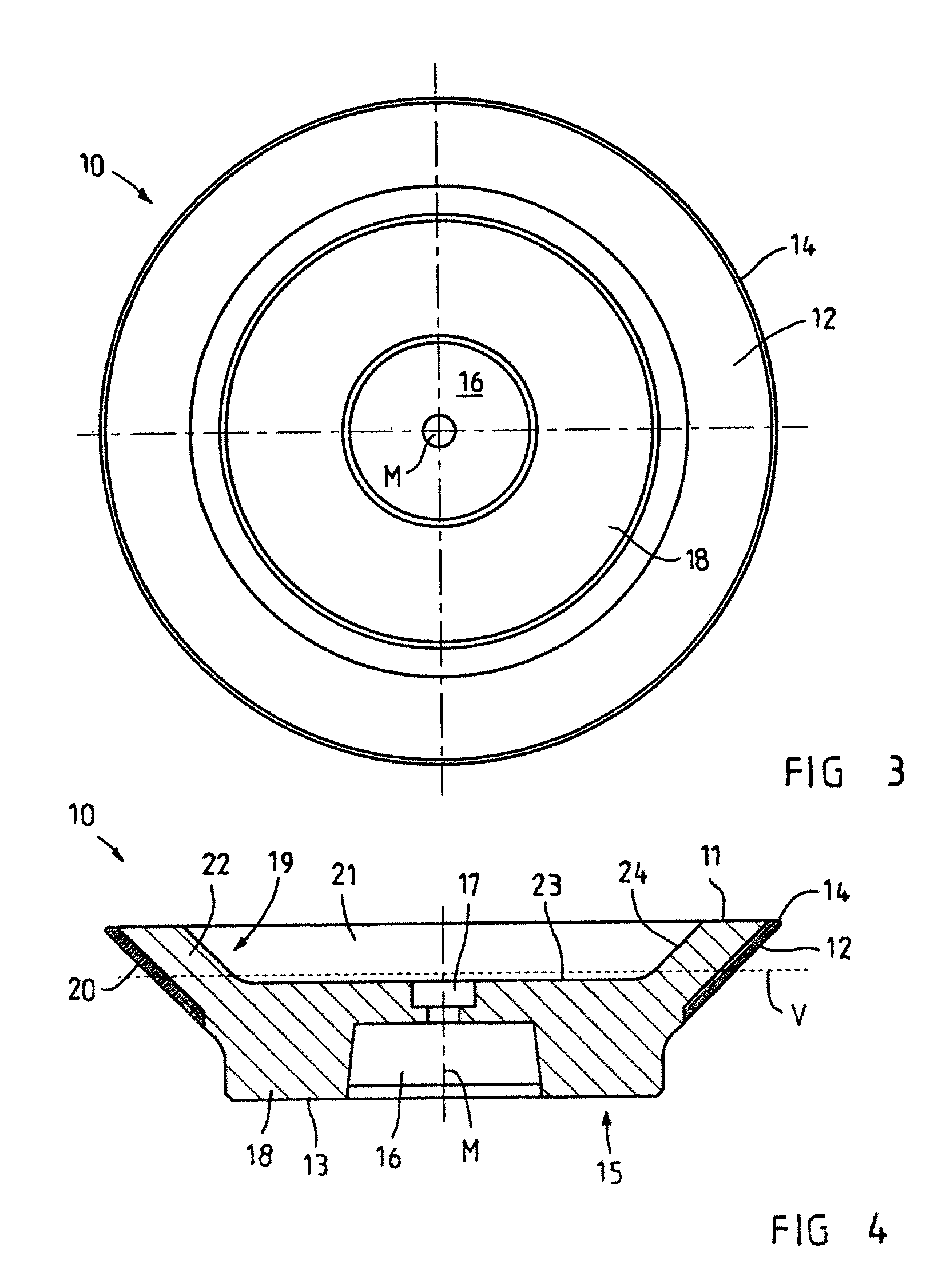Roller drill or roller bit
a technology of roller bits and drill bits, which is applied in the direction of earth drilling, cutting machines, slitting machines, etc., can solve the problems of system-related rapid wear of individual roller bits, and achieve the effect of not affecting the sharpening effect of the tool according to the invention
- Summary
- Abstract
- Description
- Claims
- Application Information
AI Technical Summary
Benefits of technology
Problems solved by technology
Method used
Image
Examples
Embodiment Construction
[0024]Referring now to the drawings wherein the showings are for the purpose of illustrating preferred and alternative embodiments of the invention only and not for the purpose of limiting same, FIGS. 1 and 2 show, of a machine (otherwise not shown in any more detail) for removing material such as rock at a schematically shown working face 1, a machine head 2 which rotates about the central axis 4 of the machine head 2 by means of the drive shaft 3. The machine head 2 can be mounted, for example via the drive shaft 3, on a tunneling machine, a heading machine, a selective-cut or full-thickness machine or a machine working with superimposed impact. In the exemplary embodiment shown, the machine head 2 has three shaft head receptacles 5, in each of which a tool shaft 6 is mounted. A roller drill designated overall by reference numeral 10 and working according to the undercutting principle is fastened in a rotationally fixed manner to the free end 7 of each tool shaft 6, said shaft end...
PUM
 Login to View More
Login to View More Abstract
Description
Claims
Application Information
 Login to View More
Login to View More - R&D
- Intellectual Property
- Life Sciences
- Materials
- Tech Scout
- Unparalleled Data Quality
- Higher Quality Content
- 60% Fewer Hallucinations
Browse by: Latest US Patents, China's latest patents, Technical Efficacy Thesaurus, Application Domain, Technology Topic, Popular Technical Reports.
© 2025 PatSnap. All rights reserved.Legal|Privacy policy|Modern Slavery Act Transparency Statement|Sitemap|About US| Contact US: help@patsnap.com



